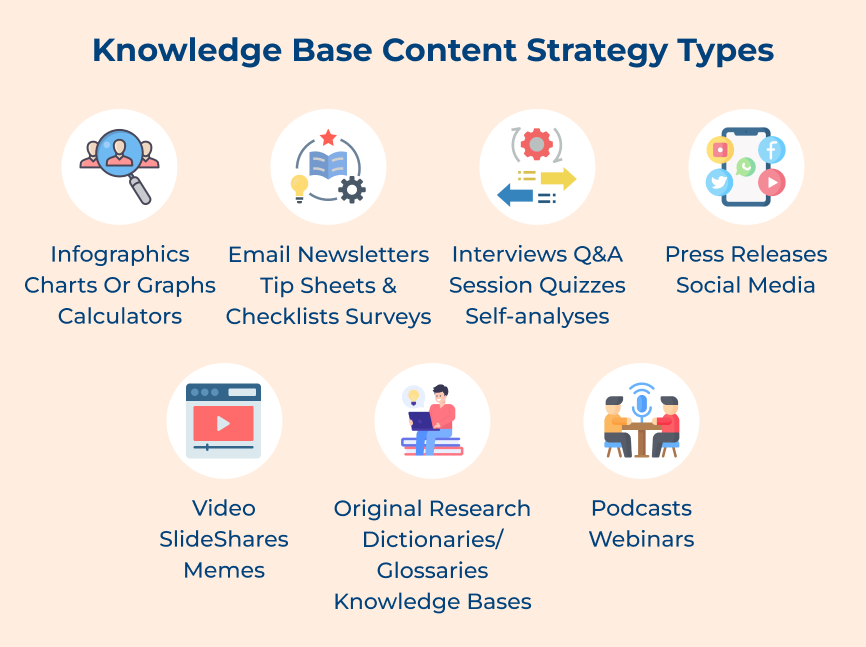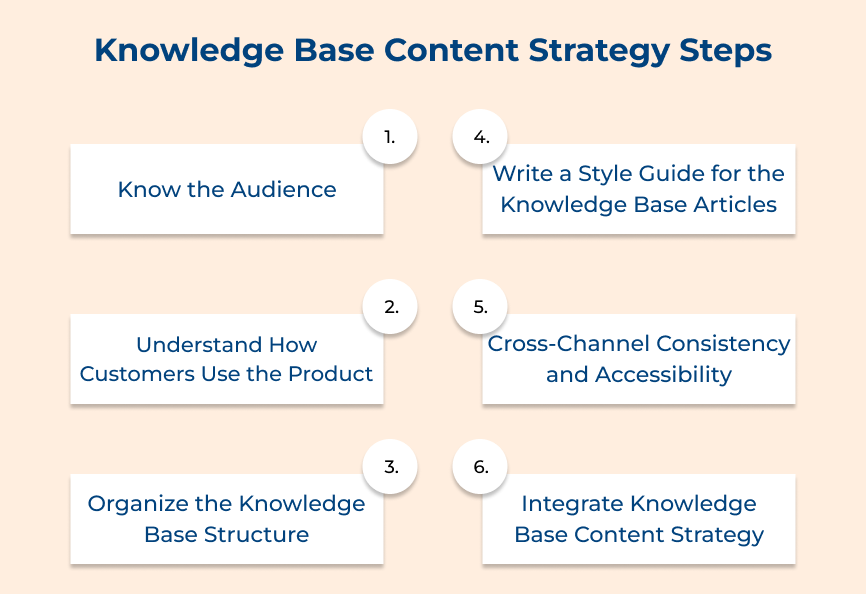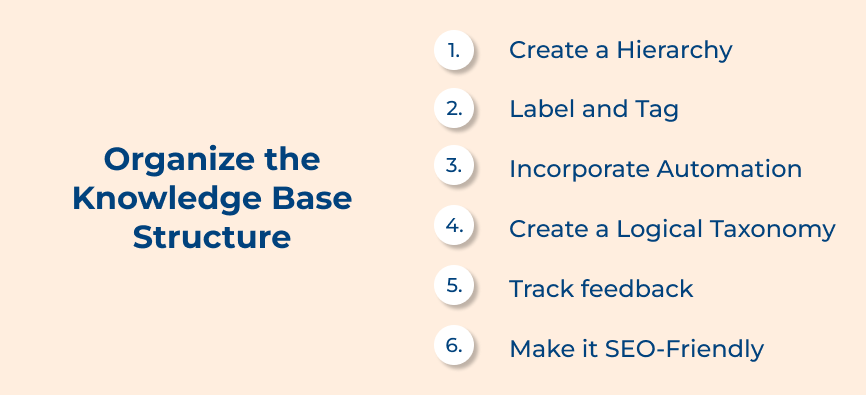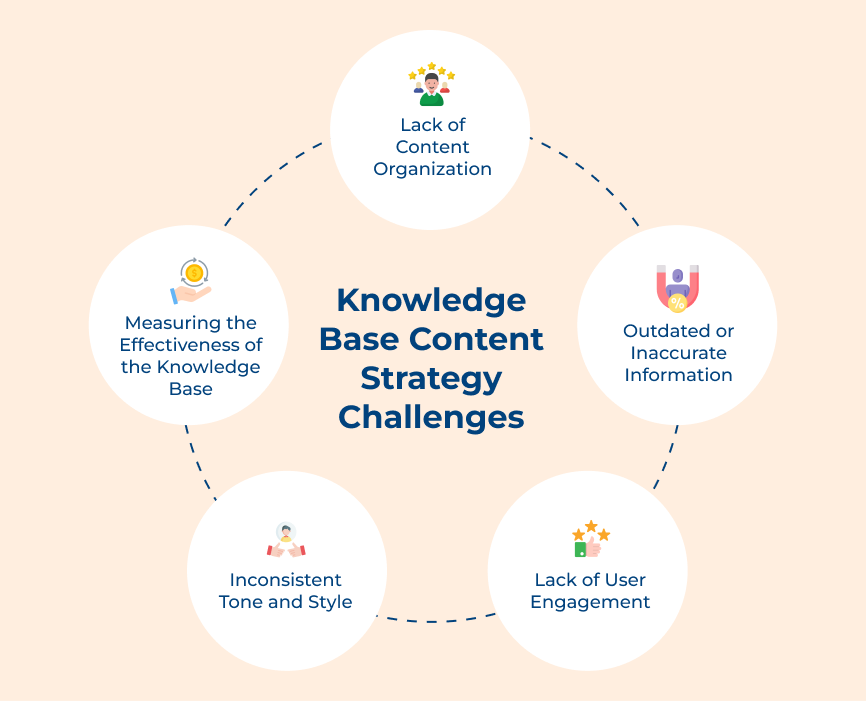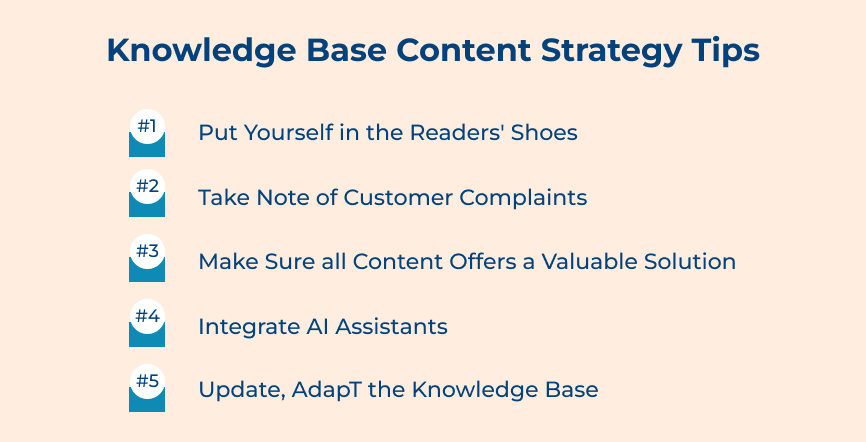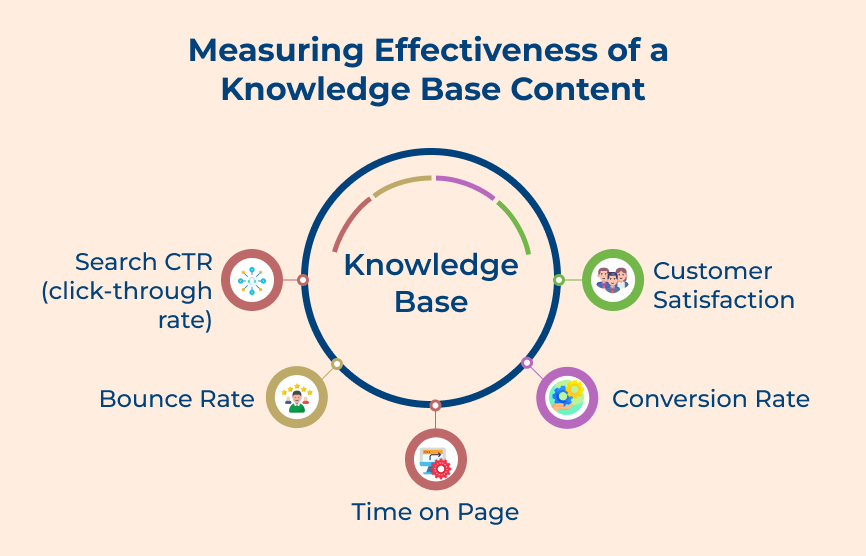Having a well-organized knowledge base structure is important. It enhances user experience, minimizes overload and boosts information retrieval speed. A well-organized knowledge base includes categorized information, a search function and relevant information retrieval.
Pro tips:
- Start by conducting a content audit to understand the types of information the knowledge base will contain and how it should be organized.
- Use a clear naming convention for categories and subcategories to make navigation easier for users.
4. Write a Style Guide for the Knowledge Base Articles
A style guide for the knowledge base articles is crucial in maintaining consistency and professionalism in the content. A well-thought-out style guide can ensure that the articles are clear, concise and easy to read for the audience.
Here are the essential elements to include in the style guide:
Tone and voice: Clearly define the tone and voice the business wants to convey in the articles. Whether it’s casual or formal and informative, consistency is key.
Formatting guidelines: Establish guidelines for headings, subheadings, bullet points and any other formatting elements. It helps to create a cohesive and organized structure for the articles.
Writing style: Determine rules for grammar, punctuation and style preferences. It helps to maintain a high standard of writing throughout the knowledge base.
Let’s consider that the articles should maintain a professional tone while still being easy to understand for our readers. Avoid using jargon or overly technical language.
Pro tips:
- Collaborate with the customer support team to create a style guide that reflects the brand’s values and goals.
- Regularly review and update the style guide to address any changes in the content strategy or audience preferences.
- Provide training and resources for the content creators. It ensures adherence to the style guide and produces high-quality articles consistently.
5. Cross-Channel Consistency and Accessibility
Cross-channel consistency and accessibility is a crucial step in building the perfect knowledge base content strategy. It ensures easy access to information on different channels while representing the brand’s message. The importance of the step lies in creating a seamless user experience. Customers can easily find the information they need regardless of the platform they are using.
The step builds trust among users, leading to higher customer satisfaction and retention rates.
Let’s assume that a company with a knowledge base is easily accessible on their website, mobile app and customer service chatbot. Consistent information will provide a positive user experience and strengthen their brand identity.
Pro tips:
- Use a centralized content management system to ensure all information is up-to-date and easily accessible across all channels.
- Implement a consistent design to maintain brand cohesion and reinforce key messages.
6. Integrate Knowledge Base Content Strategy
Struggling to create a comprehensive and effective knowledge base content strategy for business? Look no further. Integrating the knowledge base strategy is the key to building the perfect strategy for the audience. Integrating the knowledge base strategy involves aligning the content with the overall business objectives.
The step is crucial as it helps to streamline the content creation process, improve the user experience and drive better results. Let’s consider that a business provides software solutions. The knowledge base content strategy involves making tutorials, FAQs and troubleshooting guides linked to the offerings.
Pro tips:
- Use analytics to track user engagement with the knowledge base content and adjust the strategy accordingly based on what resonates with the audience.
- Collaborate with different teams within the organization, such as customer support and product development. It ensures that the knowledge base content is accurate and up-to-date.
Knowledge Base Content Strategy Challenges
Check out the common challenges in developing a knowledge base content strategy and learn how to overcome them for a more effective knowledge base.






